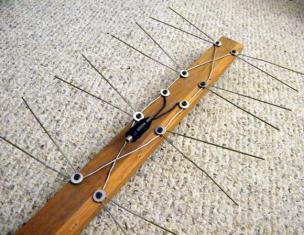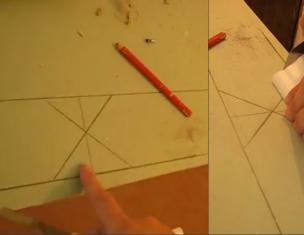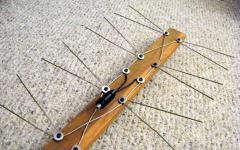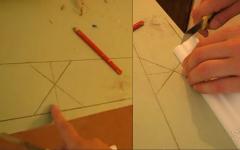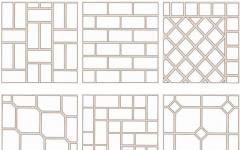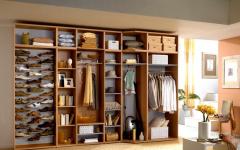There are many diverse types of wall finishes, it is both wallpapers, and panels, and paint, but we will look closer to the decorative plaster. Many consider this type of wall decoration, unusual and beautiful, but are convinced that it is expensive and laborious. This is completely wrong. Consider more details, what kinds of decorative plaster for the walls of the video will show how to apply it.

Many believe that plaster is a mixture of sand with cement (see), used to align the walls and climbing cracks. In modern plaster add coloring materials, and it turns out a decorative plaster on the walls.
Such a wall cover becomes very popular, let's look more all the differences and varieties of this material, as well as all the pros and cons of each of them. And of course, consider how to cover the walls with decorative plaster.
Types of main composition of plaster

Types of decorative plaster in their composition are divided:
- Mineral(See) - Sale in the form of cement powder and to divorce water and mix well before applying. It is used for mineral bases with quartz primer. Such plaster is rather durable, I miss the air well, has a long service life and it has a rather low price.
The minuses include the fact that it will have to be painted additionally. But there are more expensive kinds of such plaster, they are divided into their textural qualities and addition to various impurities. For example, marble crumb or blast.
- Acrylic - It includes acrylic resin, which gives plasticity and water-repellent abilities. Such plaster is easy to install, but it is capable of burning, so it is not used near the insulation from mineral wool.
This type of plaster is sold already ready to apply, but it is necessary to check its expiration date, since with an overdue or approaching material, it will be very difficult to work. Therefore, you should not take it, even if he goes with a discount.
- Silicone(See) - considered the most popular and universal. It is elastic, long lasts, it uses well and is suitable for any surface. This type of plaster is sold already ready to apply and has a large range of colors.
With the help of silicone plaster, you can create your own individual masterpieces, but of course the cost of such beauty is quite high. More to use this material will require a special silicone primer, but seeing the result, you will not regret.
- Silicate - It includes potash glass and such plaster is very rarely used to finish the inner walls. More often it is used to finish the facades of the building, since when using it highlights harmful substances.
This type of plaster is complicated in applying, as it quickly freezes and need skills and skills to have time to apply plaster, distribute it and create the desired pattern. That is why silicate plaster is not in great demand.
How to choose decorative plaster

With a large assortment of the varieties of decorative plaster, many are lost in choosing. You can choose the desired plaster, given the operating conditions and the method of application. Of course, the price is also important, because newer and fashionable materials are quite expensive.
Choosing the coating of walls with decorative plaster, first of all, consider your desire and what you want to get in the end. Further, we will look at the details of the plaster on its filling, their advantages and cons, and what effect we can with their help.
Textural decorative plaster

Textural decorative plaster is considered the most unusual form of finishing.
It adds various materials to create a textured pattern, for example:
- Small pebbles.
- Cotton fiber.
- Wood sawdust.
- Grinding brick.
- Sand.
- Slow.
Due to this filling, not only a variety of embossed patterns, but also different colors and shades are obtained.
With this type of plaster, you can create various visual effects, for example, such as:
- Sandwood.
- Watercolor painting.
- Imitation stone.
- Wooden bark.
- Velvet.
Use textured plaster in any rooms and outdoors. It is quite simply applied to any surface, can hide the irregularities and flawed walls, and for a long time.
Its main advantages is:
- Light application.
- Easy to care.
- Not afraid of damage.
- Good moisture tolerance.
- Does not lose color.
- Heat insulation.
- Good sound insulation.
- Eco-friendly.
- Weightful.
The textured decorative plaster is simply applied to the walls, the difficulty is to create a pattern, this can help:
- Fact roller (see).
- Putty knife.
- Stencil.
Tip! Before applying plaster, it is necessary to clean the walls, dry them and process to. And only after drying the primer to apply texture plaster.
Structural decorative plaster
![]()
Structural decorative plaster is selling already ready to apply, in the form of a grainy mass. It can be created on different bases with the addition of water or solvent. At the expense of its additional filling, such plaster can be both fine-grained and coarse-grained.
Fill the structural plaster with such materials as:
- Small pebbles.
- Multicolored granules.
- Quartz particles.
- Wood fibers.
This type of plaster is suitable for any rooms and surfaces, but it is worth remembering that the structural plaster with a solvent is not suitable for a bedroom or a children's room. More often it is used in the bathroom or hallway.
The main advantages of structural decorative plaster are:
- Easy application.
- Universality application.
- Resistance to damage.
- Waterproof.
- Ease of cleaning.
- Well tolerate temperature differences.
- Air permeability.
- A variety of decorative patterns.
- Affordable price.
Below step by step will look at how to apply decorative plaster on the wall:
- We prepare the walls. They are cleaning from the old coating and dried.
- If there are no big dents or drops, you can not even rave the wall.
- Apply primer. It will strengthen and protect the surface.
- We apply plaster on dried primer.
Creating a pattern depends only on your fantasy and desire. Decorative wall plaster with their own hands video will show how you can make it at home.
Venetian decorative plaster

It was used in the era of Renaissance. She was separated by the walls of palaces with a chic atmosphere. Since its composition includes a marble crumb, then the appearance of this stucco, applied to the wall, looks like a marble wall.
Venetian plaster is sold in the form of a transparent mass and with the help of a tinting and mixing two or more colors, it turns out an unusually beautiful surface. The depth and transparency of plaster is achieved by the method of special application, in several layers, covering on top of wax or varnish to protect.
The advantages of Venetian decorative plaster are:
- Creating a mosaic effect.
- Fast drying.
- Waterproof.
- Wear resistance.
- Durability.
- Ecology.
- Fire resistance.
How to cover the decorative wall plaster, consider more details:
- On smooth and purified walls, we applied primer or acrylic paint, in several layers.
- We divide the surface of the wall into several sections, about one meter.
- After complete drying of the walls, we apply plaster to the first plot.
- The first layer is applied with a solid, the following strokes.
- Stucco is applied with small strokes, you can take several colors.
- Blind and smooth over the entire area of \u200b\u200bthe site.
- Also with other sites.
- We polish the entire surface of the wall, after complete drying.
- We apply wax or varnish to protect.
Important! Venetian decorative plaster on smooth walls, otherwise you will not get the desired effect.
Using several colors, different shades are applied each to your layer. More effectively looks one color and several of its shades.
When working with Venetian plaster, you need to consider several factors:
- Applying smear, at the beginning and at the end, loosen the pressure on the smoothness - it will create a layer different in thickness.
- It is necessary to apply the layers gradually, from one site to another, polishing, capture the edge of the neighboring.
Tip! Since the application of Venetian plaster requires skills, it is worth practicing on small surfaces.
After the end of work, you need to be patient, because completely the wall will dry only in a week.
Coroede - Decorative Plaster

Decorative plaster Coroede, even by his name resembles a bark of a tree. This is a very original coating for walls in its appearance and is used for both internal and external work.
The composition of this type of plaster, marble crumb of different sizes, which, when applied, leaves various grooves on the surface. Their depth and width are directly connected to the size of marble crumbs. This decoration of the walls, creates a comfort in the interior and does not bother, as glossy surfaces, with time, can start annoying. Plaster Coroed is good for ecosil and in the interior of rustic styles.
Such plaster is for sale both in the form of powder and in the form of a pasty mass. Of course, ready-made mass is more convenient, but it costs at times more expensive dry plaster. Most often, white mixture, although occasionally, you can meet other colors.
We ourselves can make the desired color or shade, adding paint to the plaster or pre-painting the wall. Also, the method of application can be varied, from this and different drawing. For example, you can apply the plaster horizontally and vertically, crosswise and chaotic, waves and circles.
The advantages of decorative plaster cores are:
- Wear resistance.
- Ecology.
- Durability.
- Ease of cleaning.
- Fire resistance.
- Simplicity of application.
- Hides irregularities.
If you purchased a dry mixture of plaster, then the instruction of its dilution is indicated on the package.
Consider the correct detailed way to prepare:
- The dry mixture is falling into the water, but not the opposite.
- Water take warm, about twenty degrees.
- I mix all the drill with the nozzle, on small speeds.
- Give the solution to stand five minutes and beat well again.
- The proportions of the mixture and water are taken into account from the material brand and are indicated on the package.
Important! Be sure to read the instruction, as the mixture of one brand of the manufacturer can stand for several hours, and the other only a few minutes.
Decorative stuccoing of walls How to apply Count more details:
- We apply a bit of plaster on the wall and smear a thin, uniform layer.
- In about half an hour, after its thickening, we easily spend the cooler over the entire surface.
- Movements depend on obtaining the desired pattern.
- It is not necessary to put pressure on the grater, as it depends on how clear the pattern is.
Tip! If you apply such a type of plaster on a large surface, it is worth calling an assistant. One causes the solution, the second rubs the surface.
Graphite - decorative plaster

The decorative plaster graphite is very unusual material, since using it you can create a masonry imitation. And it will cost you much cheaper than even an artificial stone. At the same time, it is suitable for finishing any surface both inside and outside the building.
This type of plaster is used not only for walls, gender or ceiling, it is possible to make a fireplace, fence or path in the yard. With it, you can also create a variety of color drawings, it all depends on the designer idea or your imagination.
The advantages of decorative plaster graphite are:
- Uniqueness of the appearance.
- Simplicity of application.
- Universality application.
- Good wear resistance.
- Ecology.
- High moisture resistance.
- Acceptable price.
- Large service life.
Apply the plaster graphite easily, with the help of an automated pistol. It does not require special skills, and you can easily create your own stone masonry, not worse than the real. After a complete drying of the solution, it is possible to paint in the desired color.
Output

Of course, we considered not all kinds of decorative plaster, there are quite a lot of them: under the antique - imitation of the cracked surface; coating flock resembling flakes; applying under a fur coat, with a spray of a broom; Sgrafto - plaster with a pattern or pattern; Terrazitic - imitating rocks. You can choose only you yourself.
On the video in this article, you can see the applying of decorative plaster on the wall.



